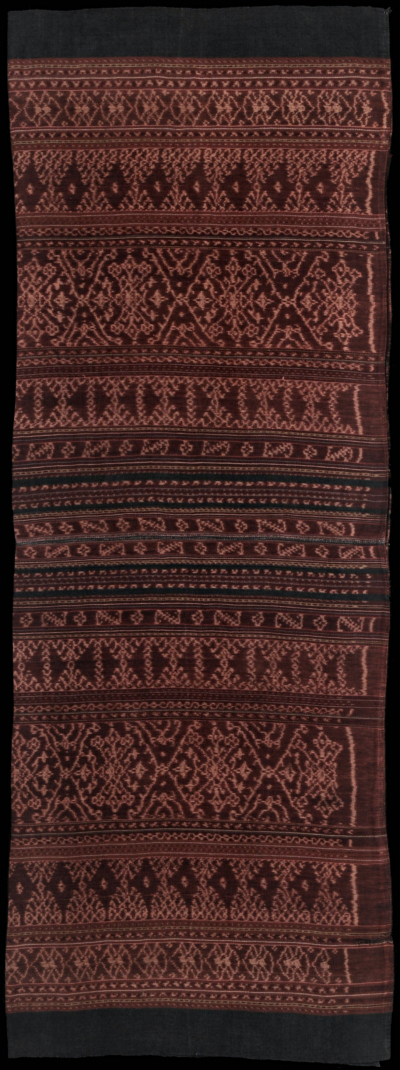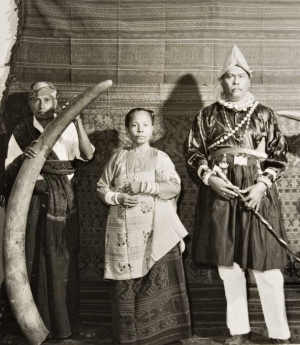| |
 
 | | | |
093 Flores Group, Sikka
Utang (sarong)  
| | Locale: | Village not identified. Probably Maumere. | | Period: | 1940 or earlier | | Yarn: | Cotton, hand-spun, fine | | Technique: | Warp ikat | | Panels: | 2 | | Size: | 122 x 170 cm (4' 0" x 5' 6") LW: 1.39 | | Weight: | 680 g (24.0 oz), 328 g/m2 (1.07 oz/ft2) | | Design: | Utang merang in two panels, each with a wide band of jilamprang motifs flanked by bands with semi-rhomboid motifs and unidentified motifs, all of which show patola inspiration. The field is a saturated morinda, more brown than red. Some stripes in indigo, and a few very narrow stripes (two threads wide) in green, pink, pale blue. | | Comment: | Traditional bridewealth sarong, utang merang, of outstanding quality. The ikating, with complex patterns tightly executed in fine hand spun, reflects the hand of an accomplished, probably older weaver. The dating is confirmed by a noticeable smell of decaying indigo, used mostly in the (invisible) weft. The fine accent stripes (often done in commercial yarn) appear to have natural dyes as well. One tiny hole due to wear, and a barely visible 6 cm tear in a dark stripe with old repair. Ex collection Verra Darwiko. [Size given above reflects the reality of sarong opened up.] . | | Background: | Chapters on Flores Group and Sikka. | | Exhibited: | Hong Kong University Museum and Art Gallery, 2017. | | Published: | Ikat Textiles of the Indonesian Archipelago, 2018.
| | Compare: | 053 | | Sources: | Similar sarong from before 1929 collected by Ernst Vatter depicted in Barnes, Ostindonesien im 20. Jahrhundert, Abb. 212. Cf. Hamilton, Gift of the Cotton Maiden, Fig. 7-13. Similar pattern, more sketchily executed, seen on cloth for sarong in Khan Majlis, Woven Messages, Fig. 393. Similar sarong, a little less elaborate, worn by wife of Raja of Sikka on photo in collection Tropenmuseum, below, early 20th C. Note the enormous ikat cloths in same style used as backdrop.
 | | |

©Peter ten Hoopen, 2025
All rights reserved.
|
|


